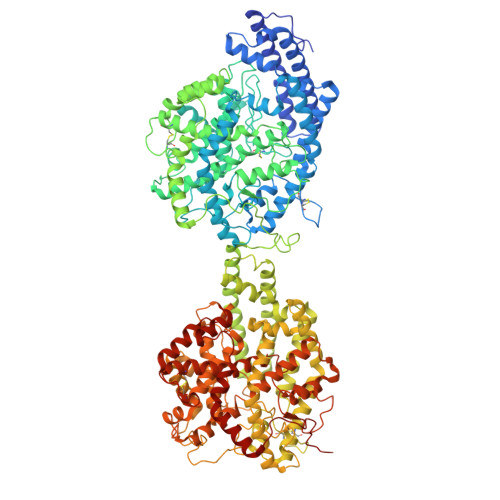Dimerization and dynamics of human angiotensin-I converting enzyme revealed by cryo-EM and MD simulations.
Mancl, J.M., Wu, X., Zhao, M., Tang, W.J.(2025) Elife 14
- PubMed: 40988601
- DOI: https://doi.org/10.7554/eLife.106044
- Primary Citation of Related Structures:
9CLX, 9D55, 9D5M, 9D5S - PubMed Abstract:
Angiotensin-I converting enzyme (ACE) regulates the levels of disparate bioactive peptides, notably converting angiotensin-I to angiotensin-II and degrading amyloid beta. ACE is a heavily glycosylated dimer, containing four analogous catalytic sites, and exists in membrane-bound and soluble (sACE) forms. ACE inhibition is a frontline, FDA-approved, therapy for cardiovascular diseases yet is associated with significant side effects, including higher rates of lung cancer. To date, structural studies have been confined to individual domains or partially denatured cryo-EM structures. Here, we report the cryo-EM structure of the glycosylated full human sACE dimer. We resolved four structural states at 2.99 - 3.65 Å resolution which are primarily differentiated by varying degrees of solvent accessibility to the active sites and reveal the full dimerization interface. We also employed all-atom molecular dynamics (MD) simulations and heterogeneity analysis in cryoSPARC, cryoDRGN, and RECOVAR to elucidate the conformational dynamics of sACE and identify key regions mediating conformational change. We identify differences in the mechanisms governing the conformational dynamics of individual domains that have implications for the design of domain-specific sACE modulators.
- Ben-May Department for Cancer Research, University of Chicago, Chicago,Illinois, United States.
Organizational Affiliation:




















